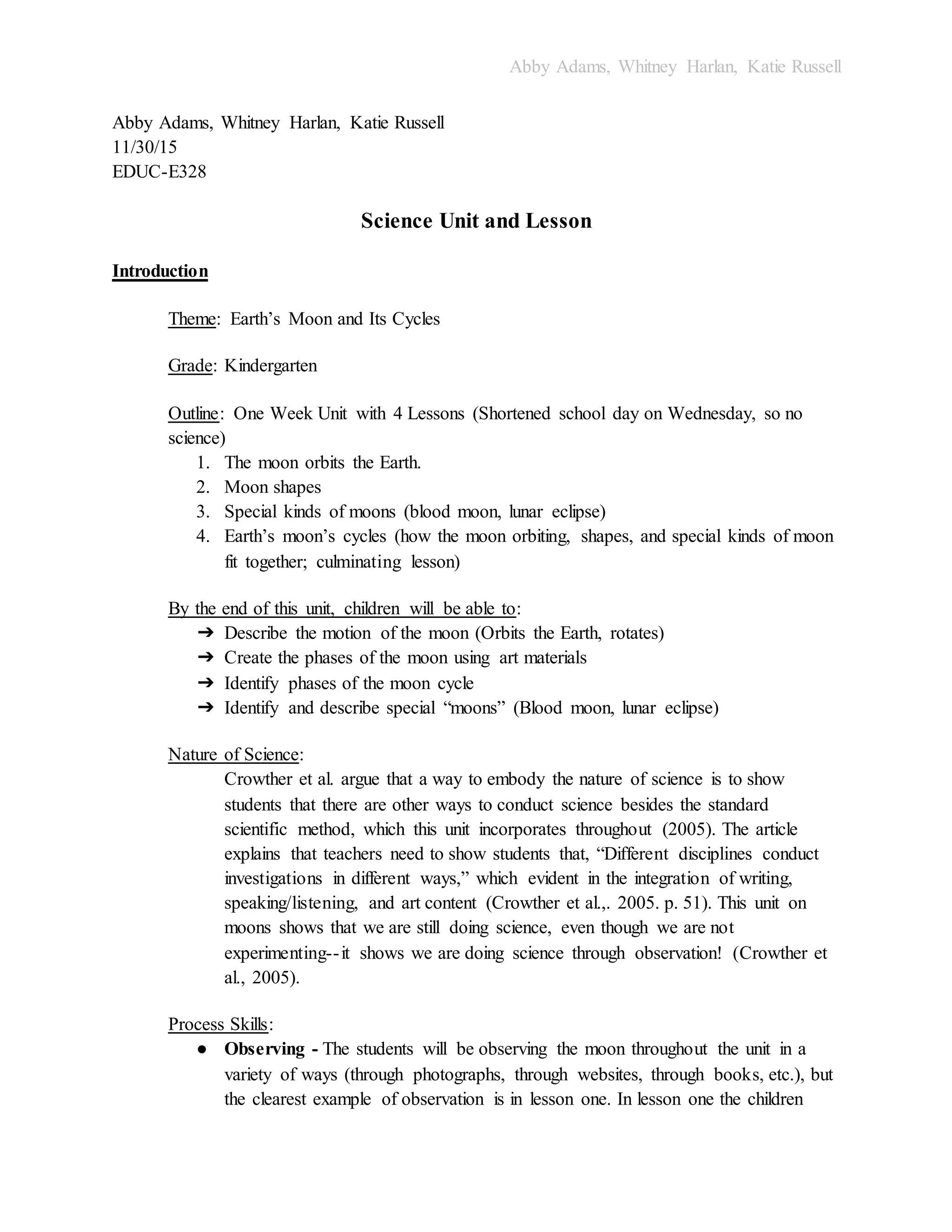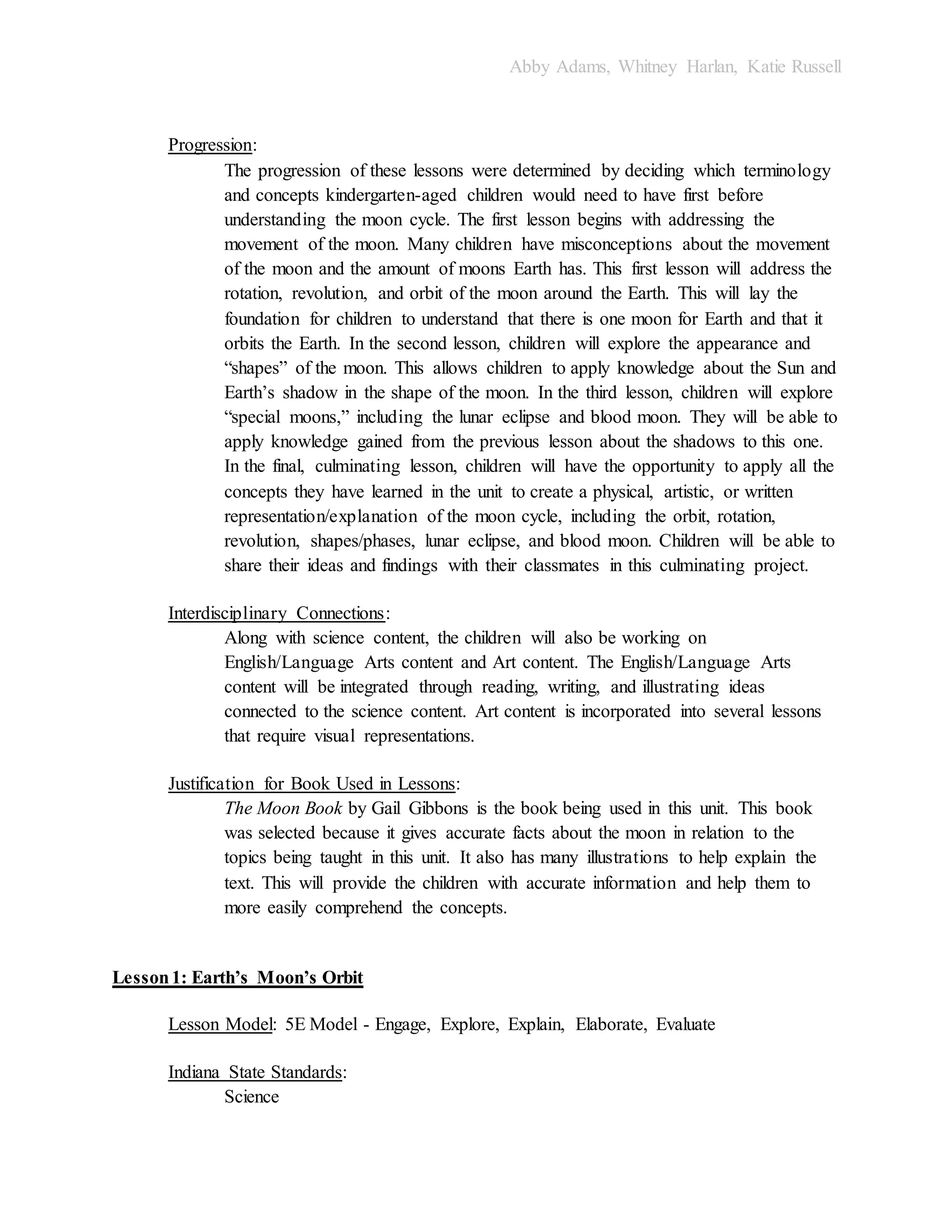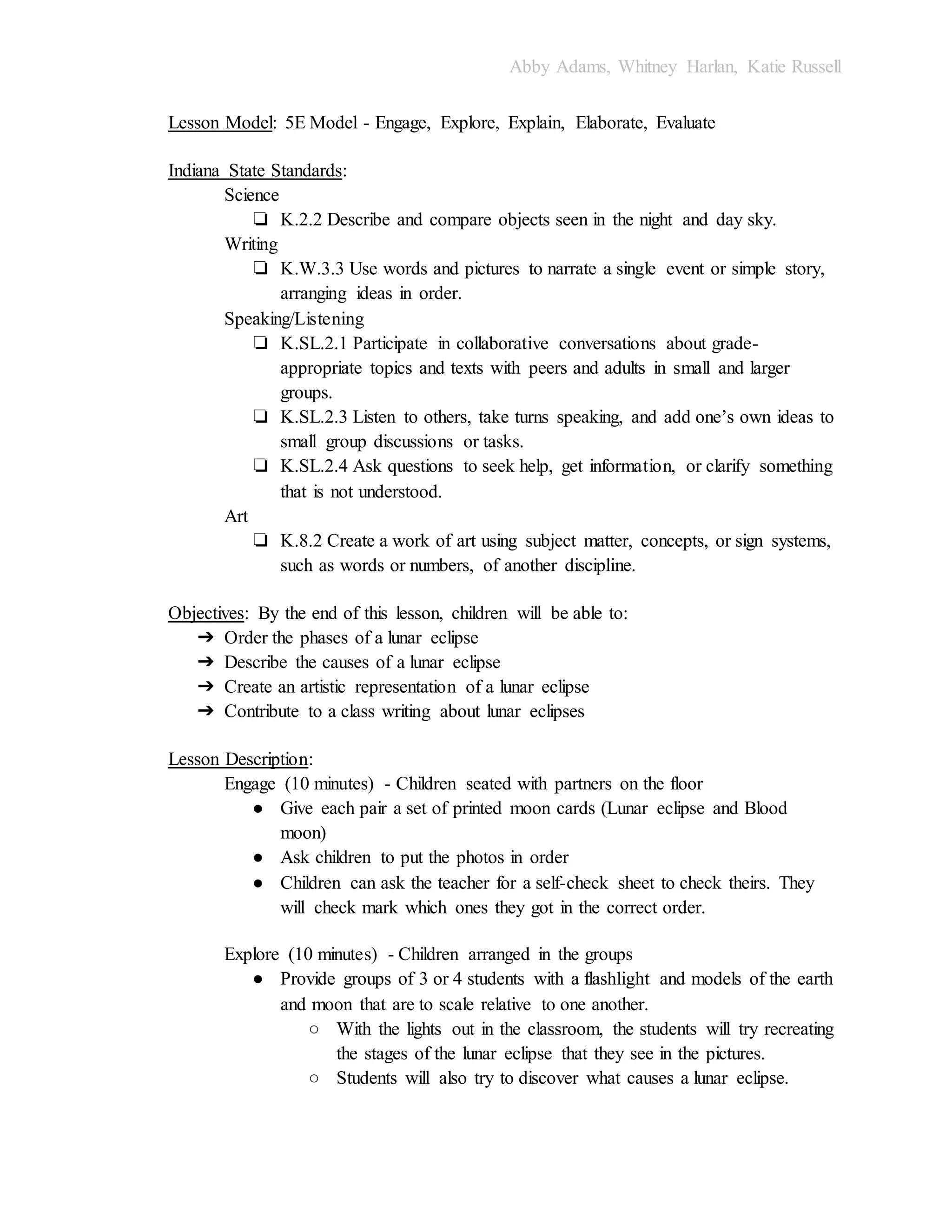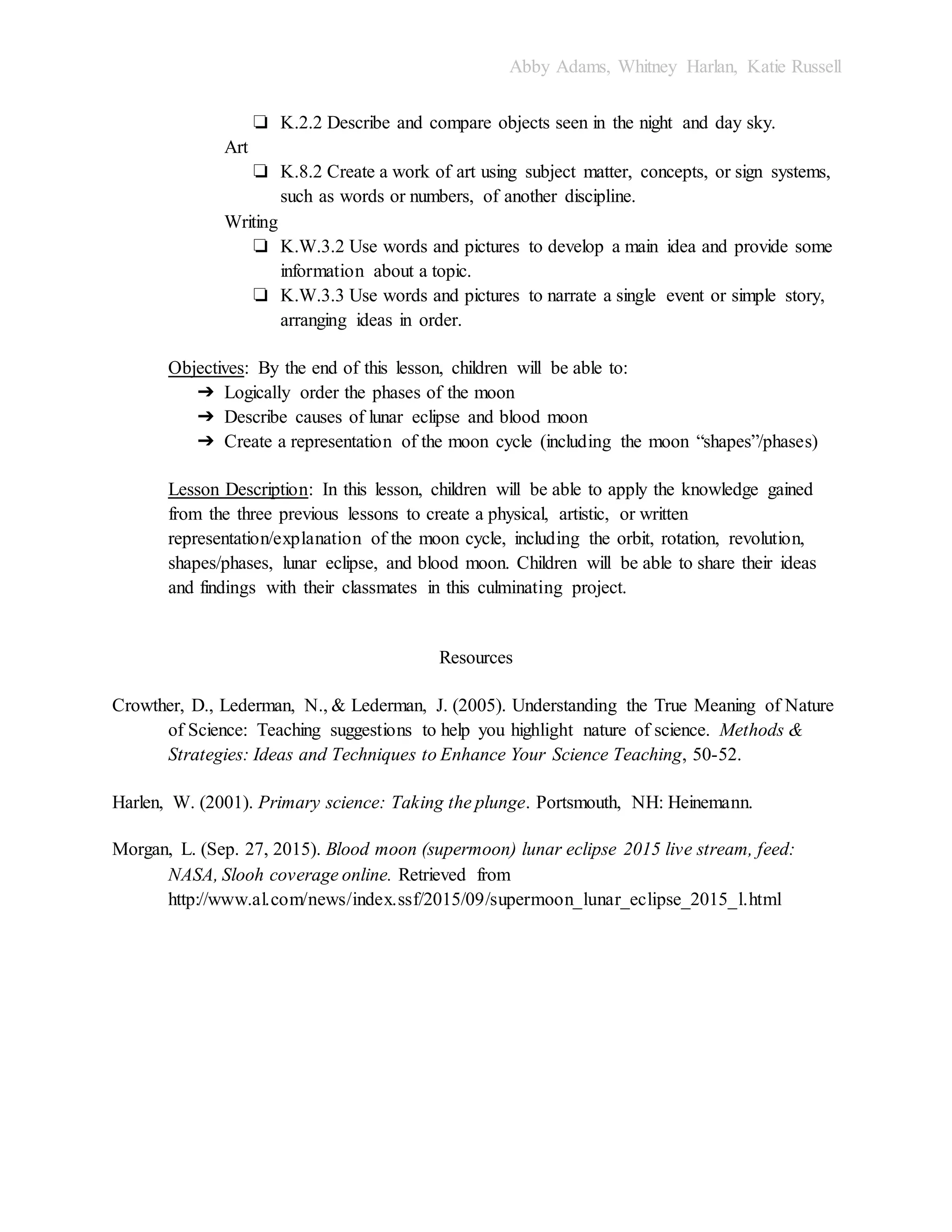This document outlines a 4-lesson kindergarten science unit about Earth's moon and its cycles. The unit introduces key concepts about the moon's orbit, shapes/phases, lunar eclipses, and cycles. Each lesson follows a 5E model and incorporates standards in science, English/language arts, and art. Students will observe the moon, recreate its phases, discuss lunar eclipses, and create a culminating project applying their new moon knowledge. The unit ensures students understand the moon's movement and changing appearance by the end.






![Abby Adams, Whitney Harlan, Katie Russell
○ Listen to the children’s explanation of the lunar eclipse during the Explain
phase. Were children able to verbally describe the phases of the moon?
(Obj. 2)
○ Monitor children’s creative representations of a lunar eclipse as they
create them. Were they able to create an accurate visual representation of a
lunar eclipse? (Obj. 3)
○ Did a majority of children actively participate in the creation of the shared
writing? [Evidenced by hand-raising, body language, etc.] (Obj. 4)
● Assessment After Lesson (Summative)
○ Collect the phase self-check sheets from children. Were the children able
to place the phases of the moon in a logical order? (Obj. 1)
○ Collect children’s representations of a lunar eclipse. Were they able to
create an accurate visual representation of a lunar eclipse? (Obj. 3)
Artifact
(Morgan, 2015)
References:
Morgan, L. (Sep. 27, 2015). Blood moon (supermoon) lunar eclipse 2015 live stream, feed:
NASA, Slooh coverage online. Retrieved from
http://www.al.com/news/index.ssf/2015/09/supermoon_lunar_eclipse_2015_l.html
Lesson4: Earth’s Moon’s Cycle
Lesson Model: 5E Model - Engage, Explore, Explain, Elaborate, Evaluate
Indiana State Standards:
Science](https://image.slidesharecdn.com/d362c45b-2c55-4d76-8d87-7678574a796b-151222031923/75/E328-Unit-and-Lesson-7-2048.jpg)
